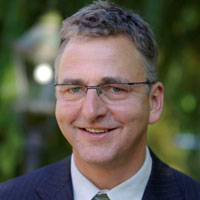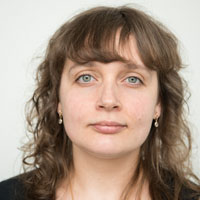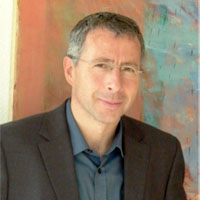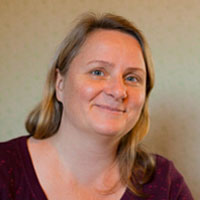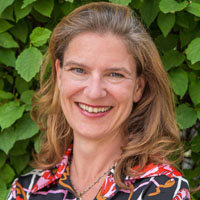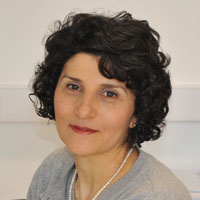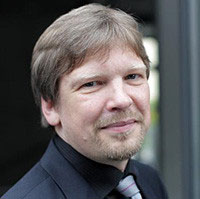Speakers
Name
|
Organisation
|
| Bjørn Tore Erdal |
Nordic Council of Ministers |
| Thomas Greiber |
Federal Agency for Nature Conservation |
| Fredrik Gröndahl |
Royal Institute of Technology |
| Collin Ingham |
Hoekmine BV |
| Janno Joosep |
Furcella OÜ |
| Lars Jørgensen |
Danish Technological Institute |
| Hilary Karlson |
Danish Technological Institute |
| Valmar Kasuk |
Vetik OÜ |
| Alexa Karina Klettner |
University Medical Center Kiel |
| Anne-Mari Luhtanen |
SYKE Finnish Environment Institute |
| Gerold Lukowski |
Institute of Marine Biotechnology |
| Donnie Lygonis |
Royal Institute of Technology in Stockholm |
| Gurvan Michel |
Station Biologique de Roscoff |
| Joana Moreira-Silva |
Blue Biotechnology Alliance |
| Ilaria Nardello |
EMBRC-ERIC Headquarters |
| Sven Parkel |
Tartu Biotechnology Park |
| Levent Piker |
oceanBASIS GmbH |
| Hendrik Schubert |
University of Rostock |
| Rüdiger Schulz |
University of Kiel |
| Christian Schulze |
University of Greifswald |
| Angela Schultz-Zehden |
SUBMARINER Network for Blue Growth EEIG |
| Kaarina Sivonen |
University of Helsinki |
| Deniz Tasdemir |
GEOMAR Helmholtz Centre for Ocean Research |
| Ben Tolley |
FR Kelly Ireland |
| Jörg Ullmann |
Roquette Klötze |
Abstracts
Valmar Kasuk (Vetik OÜ)
Title: Hidden treasures of a red seaweed
We have access to a unique source of wild red seaweed (Furcellaria lumbricalis) located in Estonian waters. The resource of this algae wild stock is estimated at 150,000 tons and Furcellaria has been harvested in Estonia since 1960 without any detectable effect on the raw stock. Our main priority is to develop a large-scale extraction of R-phycoerythrin (R-PE) from red algae. This red pigment can be an alternative to existing food colorants. It has antitumor and antioxidant properties which makes it valuable in cosmetics and pharmacy industry. Additionally, due to its fluorescent properties, high purity R-PE is largely used in the field of biotechnology. To fully exploit the potential of the seaweed, we are developing processing technologies to use 100% of the algae material to produce different valuable products, like seaweed extracts, fertilizer etc. For achieving the goals, we are collaborating with ALLIANCE partners who provide testing for seaweed drying, crushing, and pigment extraction technologies and support for business development, finding the right markets, networking and matchmaking for useful contacts and potential collaboration partners.
Prof. Hendrik Schubert (University Rostock)
Title: Beach wrack - burden or chance?
Beach wrack is seen as a nuisance along the southern Baltic coast, being removed and deposited by most of the holiday resorts at least. In this context, several attempts were made to use this seaborne material for industrial use. The lecture will give an overview about past, recent and future attempts to use beach wrack. It will explain the problems of attempts which failed and highlight the potential of ongoing attempts, respecting the limitations of use of marine macrophytes (as defined by regulations concerning ecological aspects).
Dr. Anne-Mari Luhtanen (Finnish Environment Institute)
Title: Future challenges of blue biotechnology in the Baltic Sea Region
One of our tasks in Baltic Blue Biotechnology Alliance has been to identify the most important needs for future blue biotechnology development in Baltic Sea Region. For that, the most prospective future market development areas need to be clarified, as well as the most urgent gaps in research and related infrastructure and facilities. It is also important to understand the key strengths of the main blue biotechnology hubs in Baltic Sea Region, and how we could improve and foster future transnational cooperation between research actors and funding institutions. The work has been started using the experience gained from the ALLIANCE case mentoring programme. The first results will be presented in the conference. We will also be gathering information during the conference from all the blue biotechnology experts present. The results will be published later as recommendations and guidelines for policy and decision makers, research institutes and investors.
Prof. Deniz Tasdemir (GEOMAR Helmholtz Centre for Ocean Research Kiel)
Title: Marine Microbes in Biodiscovery: Challenges and Opportunities
Marine organisms represent a rich but still understudied resource for chemically diverse and highly active metabolites that have made profound impact on human health, nutrition and life quality. The majority of the bioactive marine metabolites and drugs have been reported from marine invertebrates, but many promising molecules have been shown or predicted to have their origin in invertebrate-associated microbes. However, only approx. 1% of the estimated microbial diversity can be cultured in the laboratory. Moreover, many biosynthetic gene clusters largely remain silent or underexpressed due to lack of environmental stimuli, including challenges, cues and competition in the artificial culture conditions. A final challenge is represented by poor dereplication rates when using an untargeted metabolomic approach to identify already known compounds in marine extracts. Hence, the discovery rate of new compounds from marine microorganisms is inevitably stagnating. This lecture will summarize our efforts to address all these obstacles using state-of-the-art and innovative techniques to unlock the potential of marine microorganisms, particularly marine fungi, in discovery of lead compounds for pharmaceutical and agricultural applications.
Dr. Gerold Thomas Lukowski (Institute of Marine Biotechnology e. V.)
Title: Collagen wound dressing against the colonization of multi-resistant pathogens on a base of Maresome© from a micro algae of the Baltic Sea
Approximately 4 million people in Germany suffer currently on chronic, not curative wounds. A special problem at chronic wounds represents the settlement of multi-resistant pathogens (e. g. MRSA). IMaB develops new formulations for collagen wound dressing which should effectively prevent or reduce infections on the base of Maresome®. Maresome® are micro- and nanoparticles of algae produced by a special microencapsulation process. The particles for the wound dressing are manufactured using Baltic Sea micro algae biomass. The micro algae was identified by the scientists from Greifswald near island Rügen. The innovative collagen wound dressing with the Maresome® prevented the colonization of different MRSA strains.
Prof. Dr. Rüdiger Schulz (Botanical Institute and Botanical Garden, Christian-Albrechts-University)
Title: Near-shore Cultivation of Marine Micro- and Macroalgae in the Kiel Fjord for Biotechnological Applications
In collaboration with companies from northern Germany we are testing the cultivation of different microalgae strains and of Fucus spec. as a macroalga near-shore in the Kiel Fjord.
Advantages of microalgae and cyanobacteria cultivation are:
- 1. High biomass-production,
- 2. Interesting ingredients for food, feed, cosmetics, pharmaceuticals, biotechnology and bioenergy,
- 3. No competition with agricultural production and other land use, 4. No use of fresh water required, sea water applicable
Reasons for near-shore or off-shore aquaculture of micro- and macroalgae are:
- 1. Low investment costs,
- 2. Production areas available,
- 3. Energy-efficient cultivation,
- 4. Temperature consistency,
- 5. Optimal illumination,
- 6. Nutrients available,
- 7. Natural culture mixing.
Current projects, future planning and ideas for biotechnological applications will be presented.
Dr. Gurvan Michel (Station Biologique de Roscoff, (UMR 8227, CNRS – Sorbonne Université)
Title: Discovery of enzymes from marine flavobacteria for the valorization of macroalgae
Brown, green and red macroalgae represent a huge biomass which is mainly constituted of complex polysaccharides essentially differing from land plant polysaccharides. Some algal polysaccharides are already used in industries as thickeners and gelling agents (e.g. alginates, agars, carrageenans). These biomolecules also display interesting biological activities (e.g. immuno-stimulant, anti-viral, anti-coagulant). Despite these promising properties, macroalgal biomass is underexploited. The main bottleneck for the development of high value products based on macroalgal polysaccharides is the lack of enzymes which can specifically cleave these polymers or modify their structure and thus their properties. The most relevant sources of specific enzymes are marine bacteria which feed on seaweeds and thus naturally “crack” macroalgal biomass. Among these microorganisms, marine flavobacteria are recognized as the key players in the recycling of seaweeds. In this context, we are using a multidisciplinary strategy combining comparative genomics and catabolic and transcriptomic profiling for identifying promising candidate-genes. The corresponding enzymes have been overexpressed in E. coli using a medium throughput approach. After an activity screening step using macroalgal poly- and oligo-saccharides, the novel active enzymes have been studied in depth at both the biochemical and structural level (see for examples: [1-4]). Finally, applications of enzymes from marine flavobacteria will be presented. Notably we have developed biorefinery protocols for red, brown, and green macroalgae using the in-house collection of macroalgal-specific polysaccharidases. About 150 macroalgal extracts have thus been prepared and screened in vitro for immunostimulant and antioxidant activities. Five lead extracts have been selected and are currently tested in vivo on animal models. The ultimate goal of our industrial partners is to develop food and feed bioactive additives from macroalgae.
[1] Hehemann et al, 2010, Nature, 464, 908-12.
[2] Rebuffet et al, 2011, Environmental Microbiology, 13, 1253-70.
[3] Thomas et al, 2012, Environmental Microbiology, 14, 2379-94.
[4] Ficko-Blean et al, 2017, Nature Communications, 8, 1685.
PhD Ilaria Nardello (EMBRC-ERIC)
Title: EMBRC-ERIC: Widening Alliances for greater sustainability and societal impact.
The European Marine Biological Research Centre (EMBRC-ERIC) is a European Research Infrastructure Consortium of international relevance. Part of the roadmap of the European Strategic Forum for Research Infrastructures (ESFRI), since 2008, and established as an ESFRI Landmark in 2018, EMBRC is designed to further fundamental and applied marine biology and ecology research. Our capacity is hosted at renowned marine biological stations and institutes - the EMBRC Operators, across EU and EU-Associate countries. By organising access to these state-of-the-art facilities, we provides advanced services, facilities and technology platforms to study marine organisms and ecosystems. The vision is for EMBRC-ERIC is to be a global reference Research Infrastructure for fundamental and applied marine biology and ecology research, with a unique entry point to a unique offer of services, resources and knowledge. EMBRC-ERIC further promotes the development of blue biotechnologies by supporting fundamental and applied research activities towards innovation in therapeutics, cosmetics, nutrition, aquaculture, and fisheries, among other sectors. Global value chains that link disciplines, sectors, the European Union and world regions are required to ultimately pull research outputs into the market. This involves greater appreciation of the territorial dimension: from local/regional innovation ecosystems to global markets. EMBRC thus sustains the technology needs of local/regional innovation ecosystem, embedding it into a highly-connected environment, through the trans-national research consortium dimension. At the same time, EMBRC promotes the uptake of science and technology outputs, towards the progress of science and innovation of industry products and processes, at the global scale. Beyond the membership model, the creation of functional relationships with existing networks of knowledge and technological facilities, such as trans-regional, EU and specific world-region initiatives, will activate a broad web of interactions. While this furthers our ability to address the grand societal challenges, for which “the Marine” can be a solution provider, it will also dramatically increase the sustainability of the initiatives concerned.
Dr. Christian Schulze (Institute of Pharmacy, University of Greifswald)
Title: Microalgae for Biofuels - Revolution or Reverie?
Eukaryotic microalgae have been the focus of research for decades. Due to their high biomass productivity, they are regarded as a potential source for sustainable energy.
Despite many scientific efforts, the use of algae remains uneconomic due to high production cost, low product yields and incomplete biomass utilization. In 2013, the project “Advanced Biomass Value” (BMBF funded) started to address these main challenges. The aim was to develop an integrative production chain to utilize the whole algae biomass, following the biorefinery concept. In addition, optimization of cultivation to reduce production costs was one of the most important issues addressed. For this purpose, medium nutrients were optimized and natural water sources explored for their usability as culture medium basis. Overall, the project covered algae cultivation from screening (few mL) to demonstration (500 L) scale, harvesting techniques, downstream processes and product development as well as life-cycle and techno-economic analysis.
Kaarina Sivonen (University of Helsinki, Department of Microbiology)
Title: Genome mining and bioactivity assays as tools to discover cyanobacterial natural products
Cyanobacteria produce wide variety of bioactive compounds including potent cyanobacterial toxins but also biomedically interesting metabolites. Genome mining confirmed cyanobacteria to be one of the major bacterial lineages containing high number of nonribosomal [1] as well as ribosomal [2] biosynthetic gene clusters. One class of ribosomal peptides are cyanobactins. Our research has extend cyanobactins to contain also non-heterocyclic and linear peptides [3] and shown how tyrosin is geranylated in cyanobacteria [4]. By bioactivity guided search we detected antifungal macrolide scytophycin and glycolipopeptide hassallidin in a number of cyanobacteria and characterized the biosynthesis of hassallidins [5]. We identified nodularin in Brazilian Nostoc strains [6] and novel toxins, lipopeptide anabenolysins and their biosynthesis in benthic Anabaena cyanobacteria and showed that cyclodextrins produced by the same strains improved the antifungal activity of the anabaenolysins [7]. The 4-methylproline (4-mPro) biosynthetic genes were screened and detected in 30 of the 116 cyanobacteria strains, 12 which were confirmed to produce 4-mPro compounds. Altogether, 11 new nonribosomal cyclic peptides, nostoweipeptins and nostopeptolides, were identified from Nostoc sp. strains. The cell experiments indicated that these cyclic peptides inhibit the uptake of the microcystin hepatotoxin by blocking the organic anion-transporters [8]. We found pseudoaeruginosins, new protease inhibiting peptides, from 33 Nodularia spumigena strains isolated from the Baltic Sea but not from the Australian strains. The structure of pseudoaeruginosin seems to be coupled to the production of aeruginosins and methylproline containing spumigins. Co-operation between the spumigin and aeruginosin biosynthetic pathways may result in these hybrid peptides [9]. Several cyanobacterial strains produced unidentified antifungal and antibacterial compounds which warrant further characterization. A cytotoxicity test found high number of cyanobacterial extracts to show selectivity in favor of leukemia cells (acute myeloid leukemia) indicating cyanobacteria to be good source for anti-cancer compounds [10]. Cyanobacteria continue to be excellent source of new bioactive compounds and interesting biosynthetic pathways.
[1] Wang, H., D.P. Fewer, L. Holm, L. Rouhiainen, K. Sivonen. Proc Natl Acad Sci USA 111(25): 9259-9264 (2014).
[2] Wang, H., D. P. Fewer, K. Sivonen. PLoS ONE 6(7): e22384 (2011).
[3] Sivonen, K., N. Leikoski, D.P. Fewer, J. Jokela. Appl Microbiol Biotechnol 86(5):1213-1225 (2010). Leikoski, N., L. Liu, J. Jokela, M. Wahlsten, M. Gugger, C. Kerfeld, A. Calteau, P. Permi, K. Sivonen, D. P Fewer. Chemistry & Biology 20: 1033–1043 (2013).
[4] Morita, M., Y. Hao, J. Jokela, D. Sardar, D, Z. Lin, K. Sivonen, S. Nair, and E. Schmidt. Journal of the American Chemical Society 140(19): 6044-6048 (2018).
[5] Vestola J., T.K. Shishido, J. Jokela, D.P. Fewer, O. Aitio, P. Permi, M. Wahlsten, H. Wang, L. Rouhiainen, K. Sivonen. Proc Natl Acad Sci USA 111(18):E1909-E1917 (2014).
[6] Jokela, J., L. Heinilä, T. K. Shishido, M. Wahlsten, D. P. Fewer, M. F. Fiore, H. Wang, E. Haapaniemi, P. Permi, and K. Sivonen. Frontiers in Microbiology 8:1963. doi: 10.3389/fmicb.2017.01963. (2017)
[7] Shishido T.K., J. Jokela, C.-T. Kolehmainen, D.P. Fewer, M. Wahlsten, H. Wang, L. Rouhiainen, E. Rizzi, G. DeBellis, P. Permi, K. Sivonen. Proc Natl Acad Sci USA 112(44):13669-13674 (2015).
[8] Liu, L., J. Jokela, L. Herfindal, M. Wahlsten, J. Sinkkonen, P. Permi, D. P. Fewer, S. O. Døskeland, K. Sivonen. ACS Chemical Biology 9(11): 2646-2655 (2014).
[9] Liu, L., A. Budnjo, J. Jokela, B. E. Haug, D. P. Fewer, M. Wahlsten, P. Permi, T. Fossen, K. Sivonen.. ACS Chemical Biology 10(3): 725-733 (2015).
[10] Humisto, A., L. Herfindal, J. Jokela, A. Karkman, R. Bjørnstad, R.R. Choudhury, K. Sivonen. Current Pharmaceutical Biotechnology 17(1):78-91 (2015).
Bjørn Tore Erdal (The Nordic Council of Ministers)
Title: Nordic cooperation for blue growth
The Nordic Council of Ministers is the official cooperation of the Nordic governments. It consists of eleven councils, one of them being the Council of Ministers for Fisheries, Aquaculture, Agriculture, Food and Forestry.
Nordic cooperation within fisheries and aquaculture has a long history and is marked by close collaboration and a common understanding on issues like sustainable management and the importance of growth and innovation in the ocean-based economy.
The Nordic cooperation is dedicated in supporting the development of a sustainable blue bioeconomy through policies and strategies, research and innovation agendas.
As an indication of the political importance of blue growth in the region, the last chairmanship programs of the Nordic Council of Ministers have had the blue bioeconomy as one of their main thematic areas and a number of strategic activities have been initiated.
Thomas Greiber (German Federal Agency for Nature Conservation)
Title: The Nagoya Protocol and its implementation in the EU - What does it mean for biodiscovery?
This presentation will provide a brief introduction to the Nagoya Protocol and its implementing Regulation (EU) No 511/2014. Both legal instruments entered into force in October 2014 and create obligations for research and development on genetic resources.
Colin John Ingham (Hoekmine BV)
Title: Building Colour
Hoekmine BV is a Dutch SME discovering new and improved colours in nature. These so-called structural colours (derived from ordered nanopatterning of bacterial colonies) are copied into manufacturable materials to displace or disrupt conventional pigment-based processes (e.g. clothing, paints and cosmetics). The process is biodiscovery-based; screening iridescent marine bacteria to identify new optical structures with regard to novelty, utility and manufacturability - i.e. biomimetics. The markets addressable are diverse, the primary focus will be the paint industries (cars, defence, infrastructure) and fabric manufacturers and cosmetics. Structural colour can be used to solve serious sustainability and toxicity issues within the dye industries. In the end the consumer decides, and the new wave of structural colour paints and fabrics will play off superior attractiveness deriving from performance improvements (intensity, durability, new optical properties).
Johansen, Villads Egede, Laura Catón, Raditijo Hamidjaja, Els Oosterink, Bodo D. Wilts, Torben Sølbeck Rasmussen, Michael Mario Sherlock, Colin J. Ingham, and Silvia Vignolini. "Genetic manipulation of structural color in bacterial colonies." Proceedings of the National Academy of Sciences (2018): 201716214.
Posters
Arne Maercker (Phytolinc)
Title: Membrane Based Photobioreactor
We are a spin-off by the university of Cologne and develop a commercial size membrane based photobioreactor. By immobilizing the algae cells, we are able to increase growth rates through efficient lighting and CO2-exchange. Also, the production of certain sessile algae species with valuable ingredients is possible. For aquaculture applications, our system is easy to implement as aquaponic system.
Dr. Jaakko Hiidenhovi (Natural Resources Institute Finland (Luke))
Title: Value-added products from both Baltic herring and underutilized Finnish fish species and their side streams
It has been estimated that only ca. 40% of fish body is used for human food, resulting in 60 % side stream production. In addition to fish industry, the other source of commercially unused fish is low-value fish. In Finland, the most important underutilized fish species are Baltic herring and roach.
This study is part of the ongoing Innovation program: Blue products project that is funded by European Maritime and Fishery Fund (EMFF, 2017-2019). The main objective of the program is to provide economic growth for the fishing industry by developing value-added products from Baltic herring and low-value fish species and their side streams. The partners of the program are Aktion Österbotten (coordinator), the Ostrobothnian Fisheries Association, Natural Resources Institute Finland, VTT Technical Research Centre of Finland Ltd, University of Turku, and several Finnish enterprises are as stakeholders. The Blue products program consists of four work packages (WPs), of which Luke coordinates WP 4: Added value applications. The main objective of WP 4 is to develop added value products to be used as food ingredients, food supplements, pet foods and cosmetics, for example.
The preliminary results obtained in WP 4 show that both gelatin and collagen hydrolysates can be generated from roach (Rutilus rutilus) scales. Gelatin was extracted with hot water (80 °C, 2 h) from dried roach scales, while collagen hydrolysates were generated from wet roach scales by enzymatic hydrolysis. Both gelatin and collagen hydrolysate fractions demonstrated typical type 1 collagen amino acid content. Thus, most likely, both of these fractions could be used in many food, nutraceutical and cosmetic applications. Moreover, in addition to collagen hydrolysate fraction, a calcium-rich fraction was generated during enzymatic hydrolysis, which might be used as a natural calcium supplement both for humans and animals. However, further studies are needed both for process optimization and to characterize bioactive properties of various fractions produced.
PhD Søren Laurentius Nielsen (Roskilde University, Science and Environment)
Title: Production of microalgal biomass - research in progress
The poster will give an overview of research in production of microalgal biomass taking place at our department. The main focus will be on microalgae as feed.
MSc Tanel Ilmjärv (Vetik OÜ)
Title: Vetik: hidden treasures of a red seaweed
The main priority of Vetik is to develop a competitive process for large scale extraction of R-phycoerythrin (R-PE) from red algae. This red pigment can be an alternative to existing food colorants. It has antitumor and antioxidant properties which makes it valuable in cosmetics and pharmacy industry. Additionally, due to its fluorescent properties, high purity R-PE is largely used in the field of biotechnology. To fully exploit the potential of the seaweed, Vetik is developing processing technologies to use 100% of the algae material to produce different valuable products, like seaweed extracts, fertilizer etc.
MSc in Maritime Spatial Planning Thaysa Portela de Carvalho (University of Turku - Brahea Center)
Title: The potential of Blue Biotechnology at local level: case Gulf of Bothnia
The potential of blue biotechnology and marine bioresources has been noticed at EU level. The nascent sector is expected to grow rapidly and create new markets and jobs, especially in rural and coastal areas. The Gulf of Bothnia (GoB) as part of the Baltic Sea Region is an interesting case study area for Maritime Spatial Planning and blue growth opportunities not only because a wide range of maritime activities are already located there but also due to its rather pristine environmental conditions. The present study covers the Bothnian Bay, Bothnian Sea, and Quarks. By using combination of methods (national databases and internet searches), the Blue Economy of the area was estimated and the most representative sectors are shipbuilding, maritime transport, coastal tourism, aquaculture & fisheries and marine energy. In total, 20 biotech companies installed in the GoB were located, of which 30% could be regarded as working partly with blue biotechnology solutions. For instance, identifying the blue economy from national accounts is challenging for several reasons. The blue economy is fragmented into several different sectors; national economic statistics do not explicitly contain a ‘blue sector’. Blue Biotechnology is also still lacking a common definition, however is here defined as “the application of science and technology using biological resources for the production of knowledge, goods and services, considering the marine environment to be either a source of the biological resource or the target of the end use application, encompassing the human activities therein”. To assess perspectives of this sector, it was analysed the association between Biotechnology R&D expenditures with patent claims of marine organisms per country, as well as the number of marine research vessels of countries. In the GoB, traditional maritime activities are, and presumably will remain, significant employers in the region in the future. Since traditional sectors are taking a more sustainable and innovative direction, the high level of research in the country at least provides an excellent foundation for the development of Blue Biotechnology.
Prof. Dr. Alexa Karina Klettner (University of Kiel, University Medical Center, Department of Ophthalmology)
Title: FucoSan - Health from the Sea: German-Danish project to characterize Fucoidan for medical and cosmetic application
Algae are a rich and still under-appreciated source for medical and cosmetic application. Fucoidan, a sulfated polysaccharide derived from brown algae, has been described to have many features that renders it interesting for medical and cosmetic utilization. These features include interaction with the immune system, alteration of angiogenesis or anti-oxidative properties. However, the features of fucoidan are dependent on several factors, such as source, molecular weight, sulfation, extraction method and even seasonal changes. In consequence, depending on these different factors, fucoidan can have contradicting properties, e.g. showing pro-angiogenic or anti-angiogenic effects. In this InterReg5a funded project “FucoSan – Health from the Sea”, 11 groups from Denmark and Germany from the University of Kiel, the University Clinic Schleswig-Holstein, the Southern University of Denmark, the Odense University Hospital, the Technical University of Denmark, the GEOMAR Helmholtz Centre for Ocean Research Kiel, and small businesses (OceanBasis, Costal Research and Management) will investigate and characterize the chemical, biological and commercial properties of fucoidan obtained from different sources by different extraction methods. This project includes collection and cultivation of various brown algae, investigating the impact of the algal species, location and season on fucoidan content and bioactivity. The chemical and biological features of these different fucoidan fractions will be characterized in structure and function to create a database, correlating source, features and function. The most suitable fractions will be chosen for pilot projects investigating their properties in regard to tissue engineering, ophthalmological applications and cosmetics. In addition, market analysis will be performed and business models will be developed in order to help introducing fucoidan products into the market.
Dr. Johanna Barbara Wesnigk (Leibniz Institute for Farm Animal Biology)
Title: Marine Biotechnology based on Data Mining Marine Microbial Biodiversity
The poster will show in an easy-to-understand fashion, how taking Minute samples, only for the genetic data of marine organisms, can lead to better understanding and potential use of unknown marine diversity.
Dr. Justyna Kobos (University of Gdańsk, Institute of Oceanography)
Title: Chemical analysis of biomass of cyanobacterial blooms in the Gulf of Gdansk (southern Baltic) - preliminary results
Cyanobacterial blooms are mostly recognised as a nuisance, hampering tourist activities and fishery. However, the real effects of blooms are more extensive and multifaceted when considered from ecosystem functioning and services perspective.
The idea of using blooms to support human existence as a source of valuable proteins enriching diet has a long history. Recently new ideas of bloom biomass exploitation have emerged. Our project primary focuses on the blue use of the Baltic summer cyanobacterial blooms which are of great potential when supported by appropriate technology.
The results of chemical analysis of blooms' biomass in years 2011-2016 confirmed our hypothesis that chemical composition was relatively stable regarding main groups of compounds. Furthermore, it showed that the initial idea of exploiting the PHA compounds is not economically viable. The PHA concentration made up only on average 0.04% (min. 0.03 % and max. 0.084 %) of total dry biomass. The lipid concentrations were low and amounted between 0.58 % and 1.24 % (average 0.94 %) of total dry biomass. Relatively high average carbohydrate concentrations of 28.3 % (min. 24.7% and max. 31.9%) were measured. The highest concentrations of proteins in total dry mass, on average 37.6% (min 33.2% and max 42.5%), were measured. The analysis of the chemical elements showed that except from typical macroelements, high concentrations of elements such as follow: Na, Ca, Mg, K, Fe, Al, Mn, Sr and Zn, were found.
Further detailed analyses are needed to discover the full potential of cyanobacterial blooms biomass, but as far as we are concerned, proteins are the compounds with the highest use in blue biotechnology.
PhD Halina Kendzierska (University of Gdańsk, Institute of Oceanography)
Title: The possibility of marine crustacean production in RAS systems in Pomerania, Poland. Demonstrating the sustainability and raising awareness for RAS in the region (InnoAquaTech)
Demonstrating the sustainability and raising awareness for crustacean production in RAS systems in Polish Pomerania region is carried out as a pilot study of InnoAquaTech Project. The laboratory study takes place in the Institute of Oceanography at the University of Gdańsk. In the first white leg shrimp Litopenaeus vannamei farm in Poland we focused on a mini-scale RAS cultivation and the experiments on growth and nutritional value of the shrimp and socio-economic study regarding consumer perception and identification of scientific market recognition.
